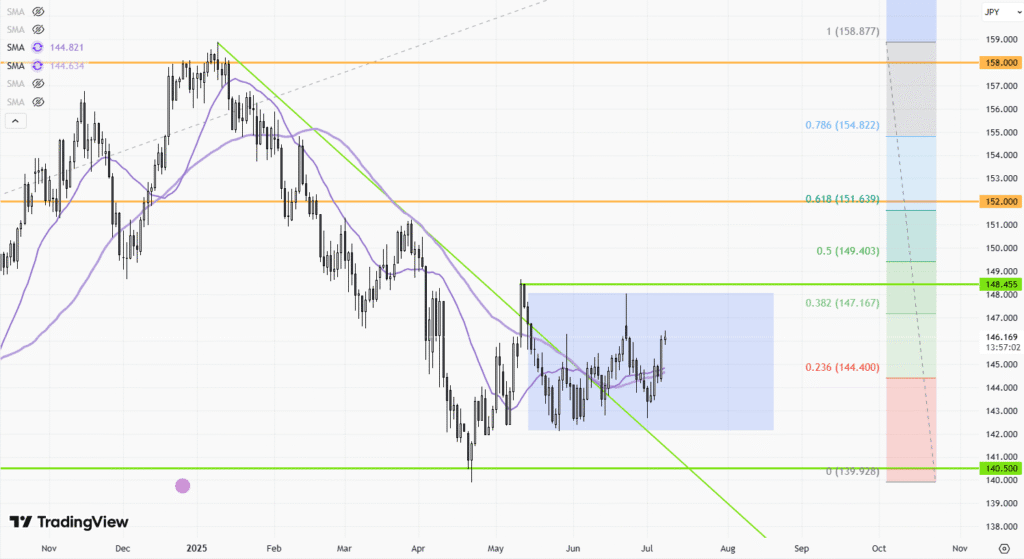 |
| Gold V.1.3.1 signal Telegram Channel (English) |

Target Q2 2025 Earnings: Revenue Beats Expectations While Earnings Decline Highlight Margin Challenges and Digital Growth
2025-08-21 @ 00:00
Target’s Second Quarter 2025: Revenue Beats, Earnings Miss—A Deep Dive for Investors
Target’s second quarter earnings report for 2025 delivered mixed signals for investors, sparking debate over the retailer’s ability to maintain growth while protecting margins. This period reflects how Target navigates industry challenges—macroeconomic headwinds, shifting consumer preferences, and internal strategic shifts—all contributing to the complexity of its financial results and outlook.
Top-Line Performance
Target reported total revenue of $25.2 billion for Q2 2025, which not only beat analyst expectations but also marked a modest strengthening after a lackluster first quarter. However, year-over-year revenue still fell 0.9%, underscoring persistent headwinds from consumer spending fatigue and competition in the discount retail space. Despite the overarching decline, pockets of growth emerged in Target’s digital operations and non-merchandise segments.
Digital sales saw a robust 4.3% increase year-over-year—a sign that investments in same-day delivery and online services like Drive Up are resonating with customers. Meanwhile, non-merchandise revenue, including advertising, memberships, and third-party marketplace sales, surged 14.2%, signaling a shift towards more diverse and recurring income streams that can buffer traditional retail volatility.
Earnings Under Pressure
While revenue beat the mark, Target’s profitability did not follow suit. Adjusted earnings per share reached $2.05, which was slightly below consensus estimates and represented a sharp 20% drop from the $2.57 posted in Q2 2024. This earnings miss highlights ongoing struggles in managing costs and defending profit margins.
Gross margin contracted to 29.0% from 30.0% a year ago, largely due to inventory markdowns, increased cancellation costs, and an unfavorable sales mix. The margin pressures reflect both the competitive pricing environment and Target’s efforts to clear excess inventory, which, while necessary, erode profitability.
A closer look at expenses shows that selling, general, and administrative (SG&A) costs rose to 21.3% of sales, and operating income declined by nearly 19.4% compared to last year. This trend puts a spotlight on Target’s cost discipline. Much of the company’s current cost base is tied to ongoing investments in digital infrastructure, delivery logistics, and store remodels—initiatives that have yet to yield pronounced gains in profitability.
Stock Performance and Investor Sentiment
The market has responded coolly to Target’s results. Shares have fallen roughly 22% since the start of the year, in stark contrast to the S&P 500’s nearly double-digit gains. This divergence underscores investor unease over Target’s ability to convert revenue stability into sustainable earnings growth and margin improvement.
Target’s price-to-earnings (P/E) ratio stands near 12x, a level that depends on the market’s belief in the future earnings potential unlocked by digital growth. However, the sustainability of efficiency gains and non-core revenue streams remains in question. Investors are wary of whether these improvements are temporary or indicative of long-term resilience.
Strategic Direction and Risks
Target’s leadership, under CEO Fiddelke, is doubling down on tech-driven efficiency, unique merchandise offerings, and enhanced online experiences to reverse a four-year sales stagnation. These efforts, while necessary, come at the expense of increased spending and greater exposure to inflationary pressures and competitive risks.
The company is also contending with margin pressures from tariffs, rising wages, and increased operating costs—all at a time when consumer discretionary spending is under pressure from persistent inflation. The ongoing CEO transition introduces further uncertainty, potentially impacting Target’s strategic agility.
What to Watch Going Forward
For investors, the critical metrics to monitor in future quarters will be the trajectory of gross margins, the pace of digital sales growth, and the effectiveness of ongoing investments in technology and e-commerce infrastructure. Management’s commentary on efficiency, cost containment, and plans for driving core retail traffic will heavily influence sentiment and valuation.
The revenue beat offers reassurance that Target’s core model remains robust, thanks largely to digital momentum and alternative revenue streams. But persistent margin pressures and muted earnings growth provide enough reason for caution, particularly in a retail sector that demands continuous innovation and razor-thin cost control.
In Summary
Target’s second quarter underscores a retailer at a strategic crossroads: modest top-line recovery counterbalanced by bottom-line challenges. For investors, the headline revenue beat is not enough—margin stability, tech-driven growth, and disciplined execution will be key to restoring confidence and share price momentum in the months ahead. As the company navigates inflation, competition, and evolving consumer behavior, every future quarterly report will be a crucial pulse-check for Target’s long-term prospects.



![[Daily Closing 🔔] Gold – Gold Prices in New York Swing Sharply as Geopolitical Tensions and Dollar Strength Drive Market Uncertainty](https://int.1uptick.com/wp-content/uploads/2025/05/2025-05-22T235933.071Z-file-1024x576.png)
![[Daily Closing 🔔] Gold – Gold Prices Climb to New Highs on Tuesday as Weaker Dollar Boosts Safe-Haven Demand](https://int.1uptick.com/wp-content/uploads/2025/05/2025-05-22T004512.731Z-file-1024x576.png)
![[Daily Closing 🔔] Gold – Gold Prices Surge Nearly 2% to $3,287.60 as Weaker US Dollar Fuels Rally](https://int.1uptick.com/wp-content/uploads/2025/05/2025-05-20T224010.678Z-file-1024x576.png)


